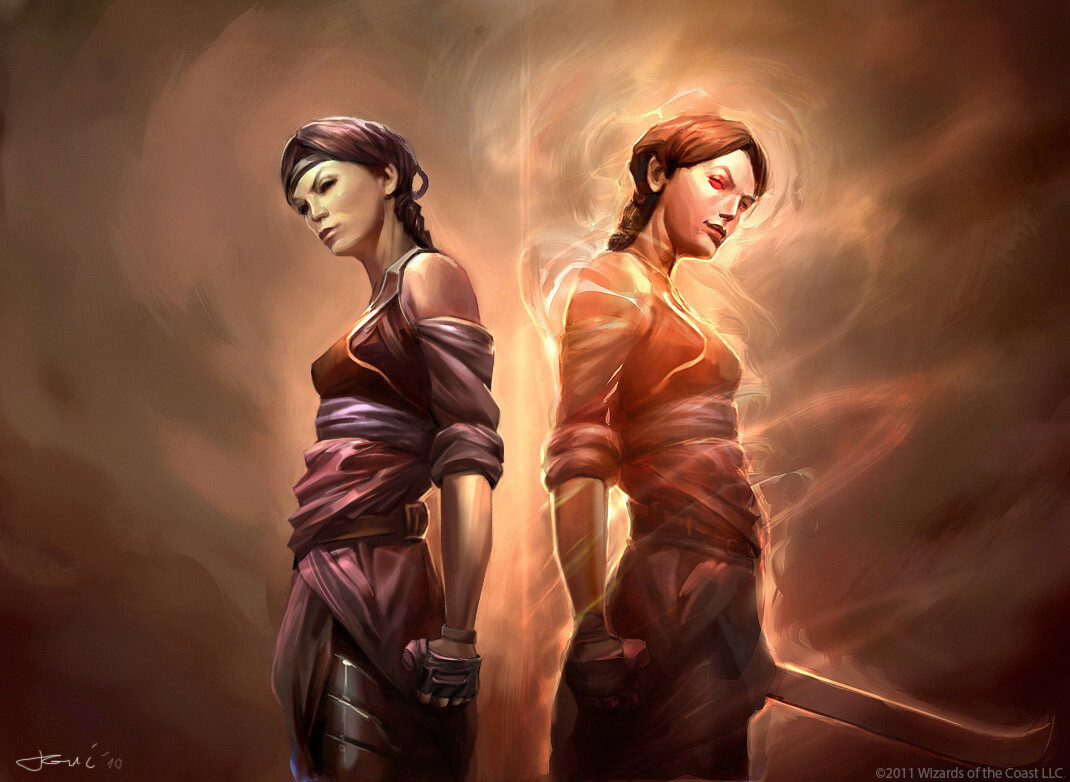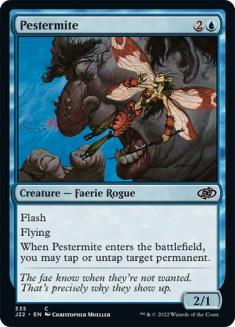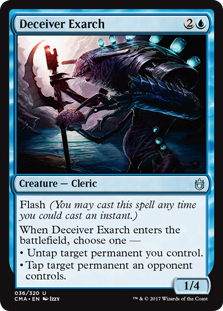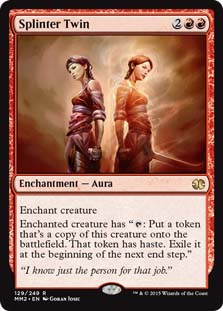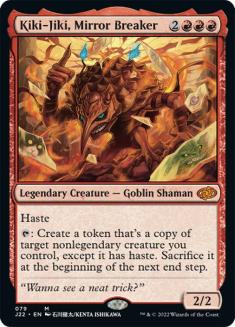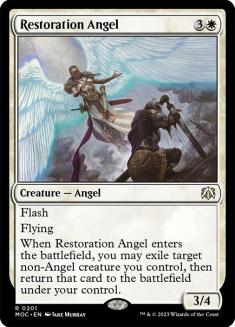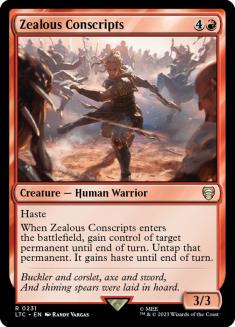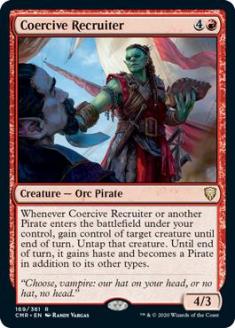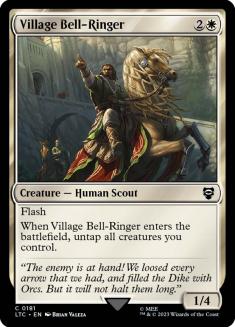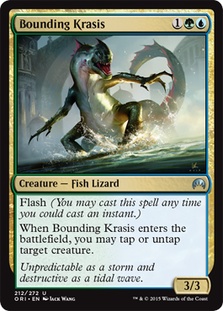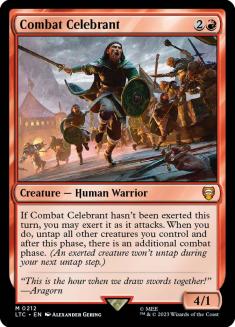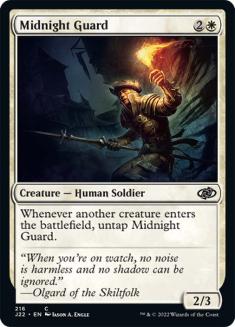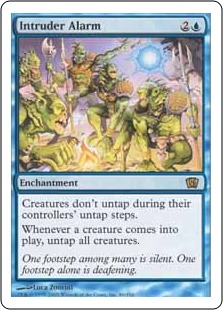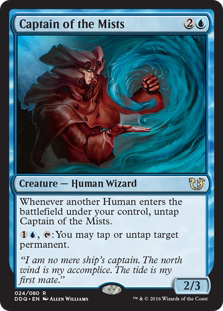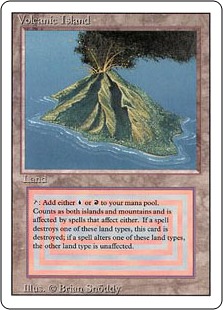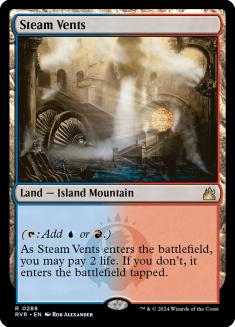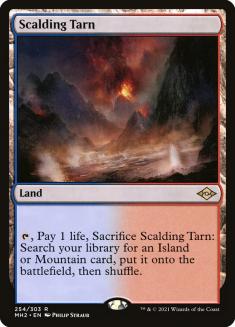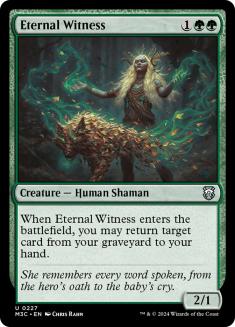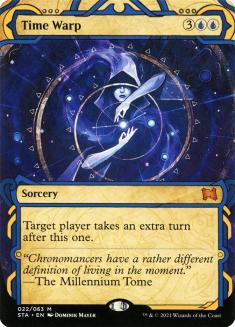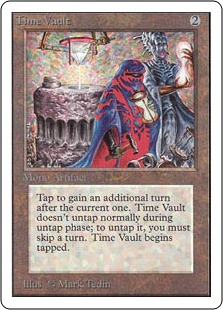Hello again, gamers, and welcome to another archetype deep dive! With Vintage Cube being live on Magic Online (MTGO) for another week, I wanted to go over a viable archetype in Magic’s most popular Cube. It seemed fitting to cover one that I know is a fan favorite, and as such, this week I’ll be going over the ins and outs of Splinter Twin Combo in Cube!
What is Splinter Twin Combo?
Splinter Twin Combo refers to a handful of two-card combos that create an arbitrarily large number of creatures with haste to end the game out of nowhere. The best known of the lot are Pestermite or Deceiver Exarch in conjunction with Kiki-Jiki, Mirror Breaker or the namesake Splinter Twin. There are a number of other options if you want to add more redundancy to the combo in Cube, with creatures that can untap a creature enchanted with Splinter Twin when they enter the battlefield or blink or otherwise untap Kiki-Jiki being the name of the game.
The above isn’t an exhaustive list of combos in this space, especially not if you’re open to three-card combos, and you won’t see more than the base four cards along with Restoration Angel and Zealous Conscripts in most Cubes. In fact, a major part of the appeal of Splinter Twin Combo is that it only takes up a couple of slots in your deck to offer a win from no battlefield position that starts with flashing a creature in on the opponent’s end step.
Most commonly, you’ll see this combo show up in decks that otherwise lean controlling, and it will also be common and ideal that these decks feature other win conditions. Some builds will lean hard on the combo to actually close, but game-enders like Jace, the Mind Sculptor and Chandra, Torch of Defiance will commonly show up in the best builds of the archetype.
How Should I Approach Drafting Splinter Twin Combo?
In order to build a Splinter Twin Combo deck, you’ll need to draft cards that facilitate the combo. Thank you for coming to my TED talk.
More seriously, I approach Splinter Twin the way many approach Storm: that is, only drafting the combo when the pieces are flowing freely. There are those who like to draft the card Splinter Twin very highly, but in a world where more and better spot removal is printed all the time and I know that I’m drafting against the people who can’t pass a Pestermite, I’m not a fan of this strategy.
Splinter Twin decks will almost always be base blue and red, with options to go into any of the other three colors. Izzet dual lands also tend to be drafted pretty early, at least in environments like the MTGO Vintage Cube, and I draft that fixing more highly than individual combo pieces. This is especially important if you want to actually cast Kiki-Jiki.
I also find that, without good card selection, my Splinter Twin decks end up being total flops. I’m always one to pick Preordain highly, but this is especially important when you have cards like Deceiver Exarch that don’t really do anything on their own in your deck. My best-performing Splinter Twin decks also lean on having a good volume of counterspells and/or removal and alternate win conditions, as I mentioned before. The elevator pitch for my approach to Splinter Twin combo that has resulted in my best-performing Splinter Twin decks is that I try to draft a good Izzet control deck, and if the combo comes back to me on the wheel, then it’s meant to be.
How Fun Is Splinter Twin Combo?
Two-card combos that end the game on the spot are polarizing. Some Cube designers don’t go near stuff like this, but Splinter Twin Combo does have a huge following among Magic players broadly. There’s not a right or wrong answer here, and on some level I’m sympathetic to both camps.
Splinter Twin Combo can be a fun deck to pilot when you do end up with a good spread of card selection. The sweat of resolving Ponder and trying to find your spot to go for your combo can be really engaging. Sometimes it’s all for naught because you don’t have a choice but to try to combo into a removal spell anyway, but even in those games, the build can be dramatic and enjoyable. It’s also just really enjoyable to hit the “I win” button when the stars align for you and the combo goes off without a hitch.
That said, Splinter Twin Combo can be among the less fun decks to play against. I can’t tell you how often I’ve played or watched games where things seem under control “unless the opponent just kills me here somehow,” a phrase that seemingly magically conjures a Pestermite to the opponent’s hand. The combo allows interaction, and sometimes making decisions that involve leaving up removal or taking the shields down can be fun, but not always.
How Do I Support Splinter Twin Combo as a Cube Designer?
I’d say that Splinter Twin Combo is pretty firmly a “sometimes food” as far as Cube archetypes go. I don’t tend to endorse it or other combos unless the Cube is of a moderately high power level. The actual combo cards also don’t do a ton that isn’t explicitly comboing in these higher-power environments, so whether to include Splinter Twin Combo or not is a genuine question. They’re so popular that I expect to see them in perpetuity on MTGO, but eschewing Splinter Twin in a high-power Cube in favor of cards that are more generally playable makes sense to me.
Once you do decide to facilitate Splinter Twin Combo, there are a couple of avenues you can explore to make the pieces fit into more decks. Equipment cards work to this end, as Deceiver Exarch is a lot more threatening when it’s carrying an Umezawa’s Jitte. Beyond that, I really like finding some overlapping combos to make the cards more appealing.
Using Splinter Twin or Kiki-Jiki to copy Eternal Witness can be really powerful, especially if you do so to loop an extra-turn effect. Other creatures with enters-the-battlefield abilities are good to have around too, but unless they can facilitate a game-ending combo, they’re not likely to be worth the risk in an environment where the power level is high enough for two-card combos. I also like using Pestermite to untap Time Vault, which is an aspect of my Powered Grixis Twobert, but that’s starting to get into serious “don’t try this at home” territory.
Mostly, just having a high volume of card selection and alternate win conditions and small-package combos will be the easiest way to make Splinter Twin shine in a Cube. I also think a good volume of mana-fixing lands is important, but that’s pretty conventional Cube wisdom otherwise. I wouldn’t be upset to see more Cascade Bluffs in Cubes featuring Kiki-Jiki and Cryptic Command.
For my money, Splinter Twin Combo is a “Vintage and Legacy Cube only” sort of thing, but as long as there are comparably powerful win conditions and a lot of good interaction for the combo, it won’t be out of place. Despite the Modern banning, I think Splinter Twin is just fine for something like Modern Cube. Like all things Cube, there are no right or wrong answers, but there are better and worse ways to achieve your goals.

